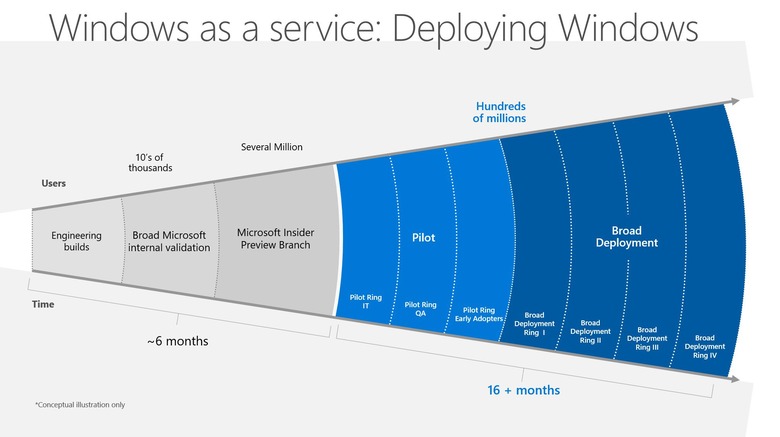Windows 10 20H1 Could Be Another Disaster Unless Microsoft Takes This Step
Taking a breather from Samsung, Apple, and Huawei, the tech world will be focusing its eyes on Microsoft when it launches new Surfaces devices. The company has proven that it can make great hardware to go along with Windows 10. Unfortunately, the tech giant most popular for its software now has an ironic problem of being unable to maintain the quality of its software. That's especially true for Windows 10 updates that seem to break twice a year or sometimes even every month. The Windows 10 20H1, a.k.a. the May 2020 update, could prove to be another hair-pulling experience unless Microsoft makes this important change.
Major changes coming
Most people monitoring Windows Insider builds might notice that blog posts often talk about the upcoming 20H1 release which is schedule for the first half of 2020. That's while the 19H2 hasn't launched yet. The development of that version may have already concluded but it wasn't a large one anyway.
This Fall's release was focused on refinement and bug squashing, which means all the big changes are being queued for the 20H1 release expected to launch in May next year.
Many of those changes sound like improvements over existing features, like easier Bluetooth device pairing and the new Cortana app. Others, however, could change the way you use your computer. UWP apps that automatically restart when you login will definitely be helpful but the ability to reset PCs from the cloud could prove worrying considering Microsoft's track record for the past few years.

Bugs, bugs, bugs
When Microsoft changed its release strategy to "Windows as a Service", it promised swift responses to bugs and security vulnerabilities as they happen. Unfortunately, that also seemed to come with fast bugs that affect users at almost every update. Those can range from suddenly breaking peripherals to, worse, suddenly disappearing files.
Given that history, it's not too difficult to imagine how things could go wrong next year. Users could complain being notified about their PCs being reset through the cloud, either because of a bug or a security exploit.
The new Bluetooth pairing feature could break Bluetooth devices (again), and UWP apps could refuse to automatically restart at login or won't stop restarting at all. In a space where anything could go wrong, it seems that Windows 10 updates are really pushing the limits of Murphy's Law.
Real-world in-lab testing
Multiple insider reports give a glimpse of how the world's biggest software company could be seemingly so careless about its primary product. It seems to be a conflict between Microsoft's more traditional processes and mindset against the new spirit of agile development it wants to adopt. It may have plunged too early into new systems and promises without first adjusting their internal structure and processes.
On the flip side, it may have also tried to become lean and agile to an extreme degree with little thought to the consequences. A recent testimony from a former Microsoft employee reveals how Microsoft practically threw out its test-oriented infrastructure and workforce out the window.
Instead of testers and dozens of real-world devices, Microsoft reportedly switched to using virtual machines solely, which only covers the most common and most basic bugs.
Wrap-up: Another paradigm shift
Microsoft, as its name implies, started out as a software company. Save for the Xbox, it has traditionally been terrible at hardware but the Surface became its redemption. However, it seems its original legacy is in danger of becoming a joke, especially at a time when the reliability of its software is critical to its services and enterprise business.
The solution might almost be too simple to be true and it could indeed be just one aspect of Microsoft's problem.
At this point, however, more testers and more actual test devices would not hurt and only improve the quality of its releases. And, no, Insiders don't count since Microsoft needs to squash those bugs even before they get to "public beta testers".
Microsoft needs to walk the fine line between being agile but also being 200% sure about its software quality and it definitely has the resources to make that happen.
